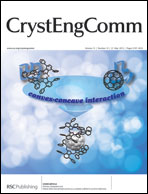High resolution X-ray diffraction, X-ray multiple diffraction and cathodoluminescence as combined tools for the characterization of substrates for epitaxy: the ZnO case
Abstract
The goal of this work is to show the capability of X-ray multiple diffraction (XRMD) to be used in combination with


 Please wait while we load your content...
Please wait while we load your content...